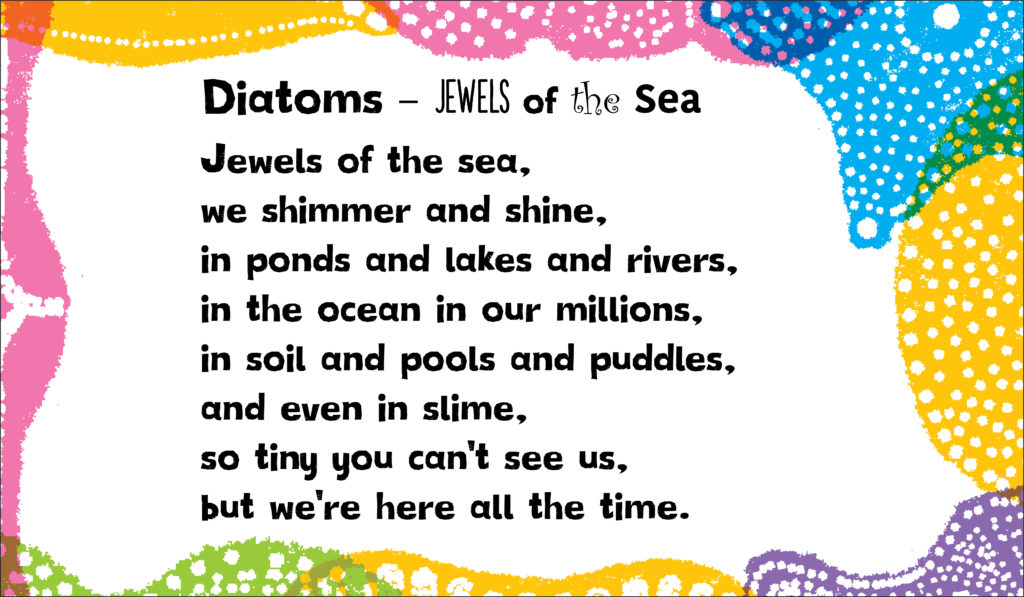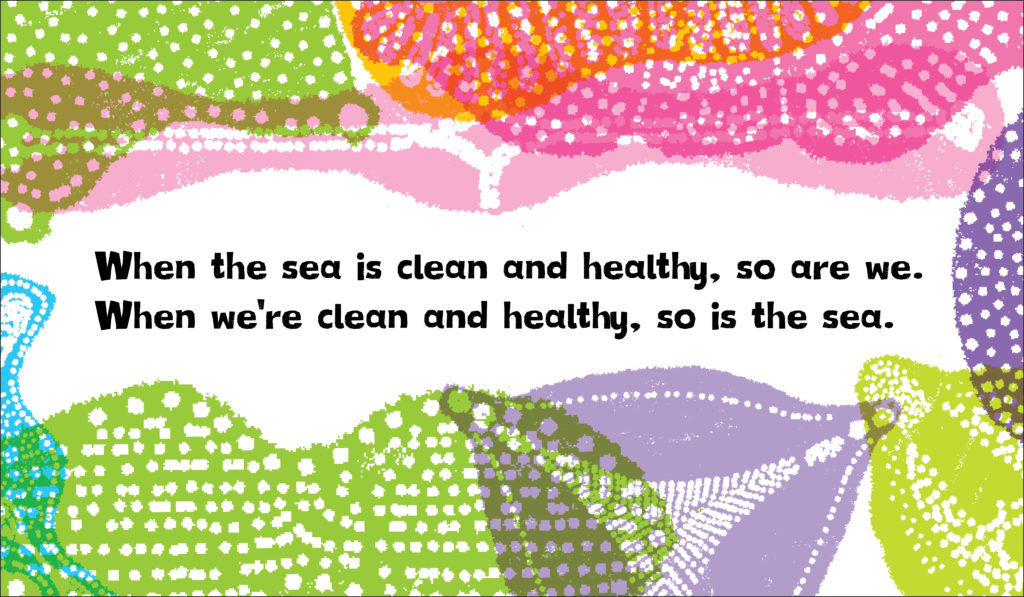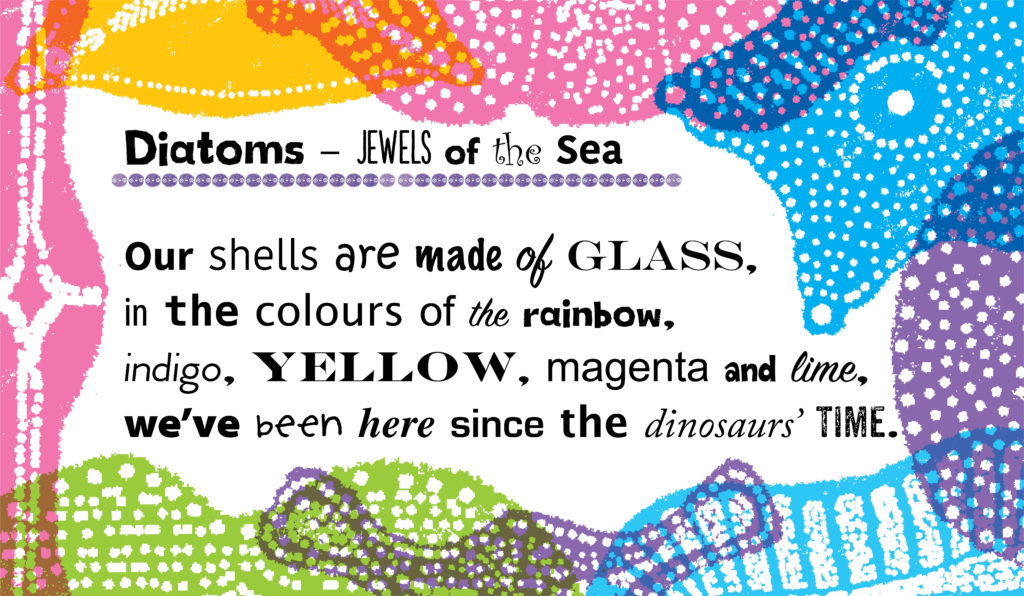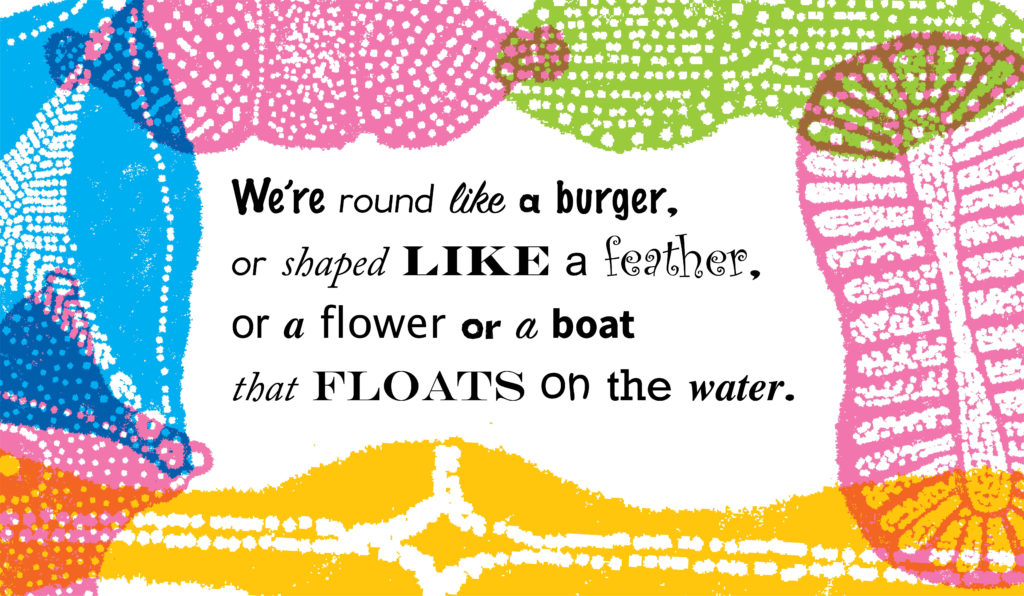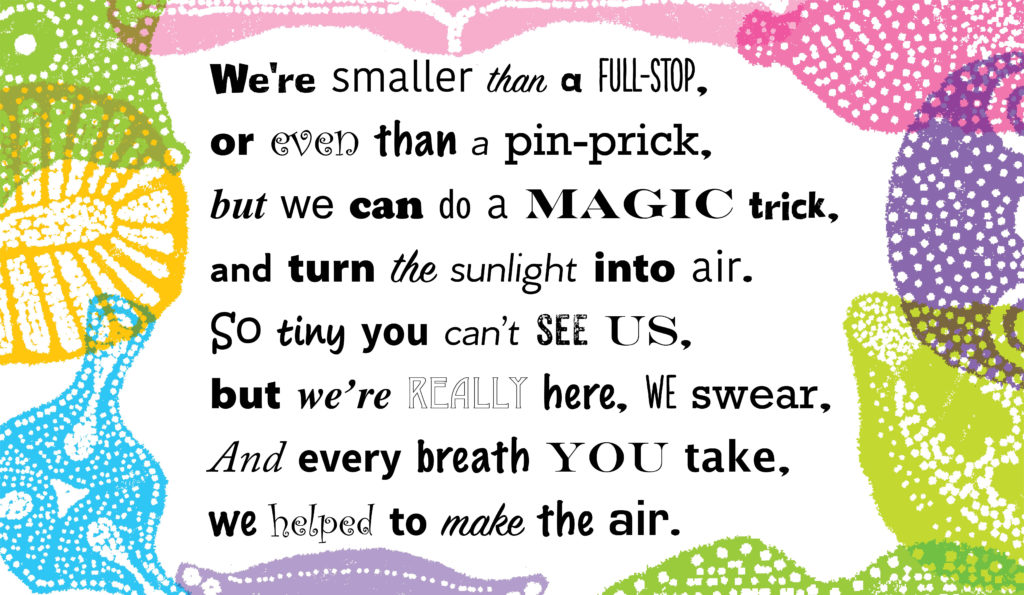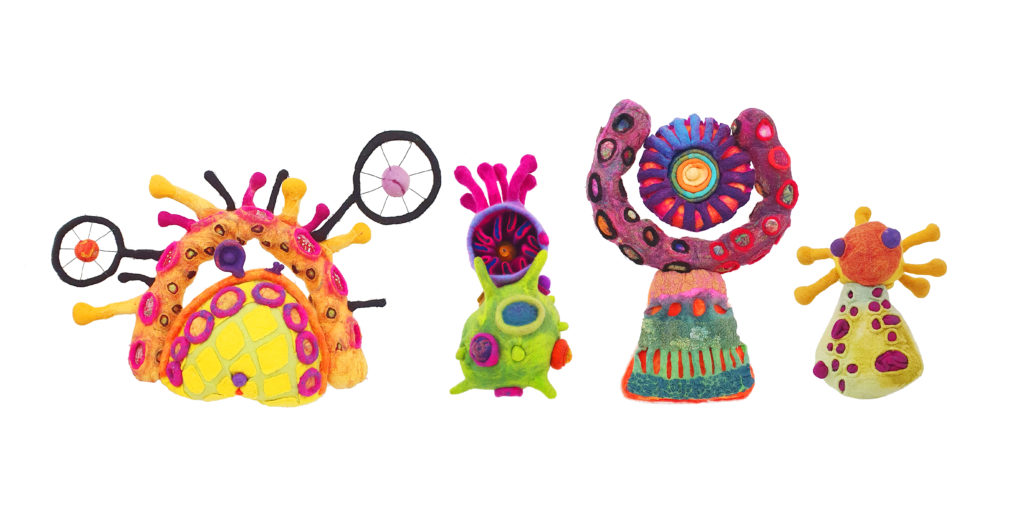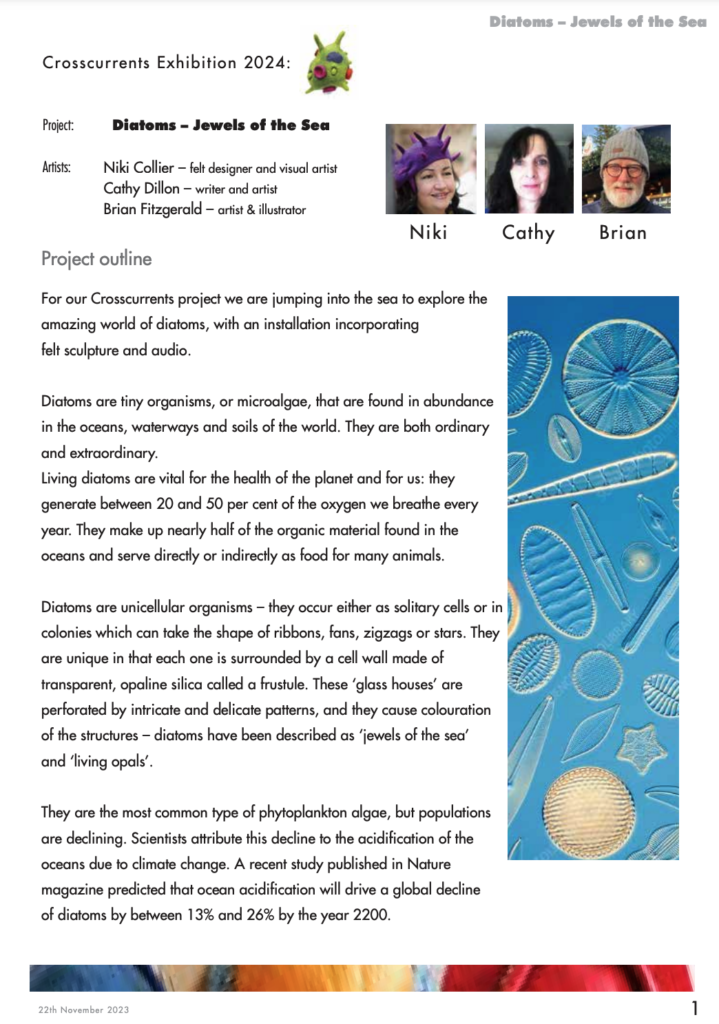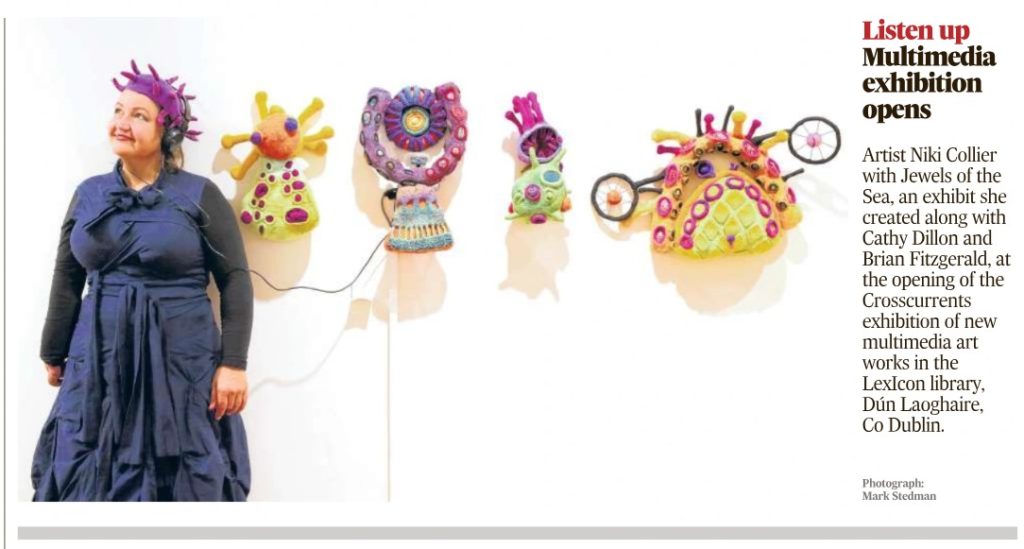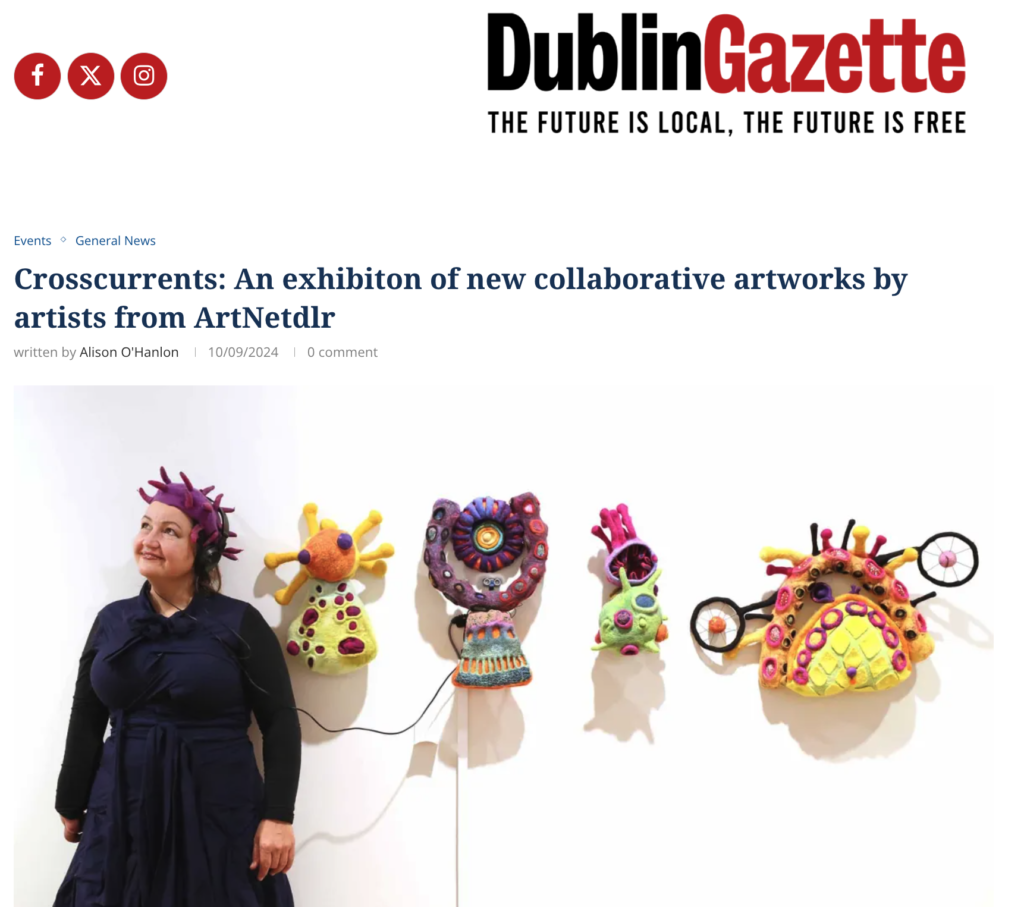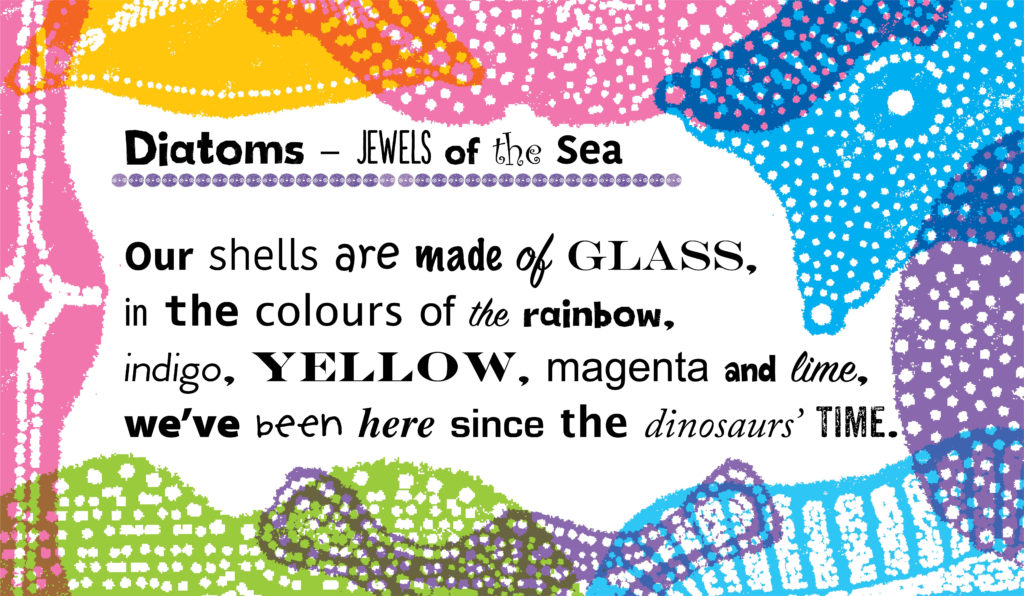Crosscurrents is an exhibition of new collaborative artworks by artists from ArtNetdlr curated by Claire Halpin (Artist & Curator). The artists from ArtNetDlr were invited to express their interest in working collaboratively with another artist (or artists) from different discipline(s). Each group worked together for over a year developing a collaborative proposal that responded to and reflected the theme of Crosscurrents. 39 artworks were selected for exhibition, our work, entitled Diatoms – Jewels of the Sea, was amongst those selected. The exhibition wildly successful; the opening night was attended by more than 550 guests and over 10,000 people visited the exhibition over a 2 month period.
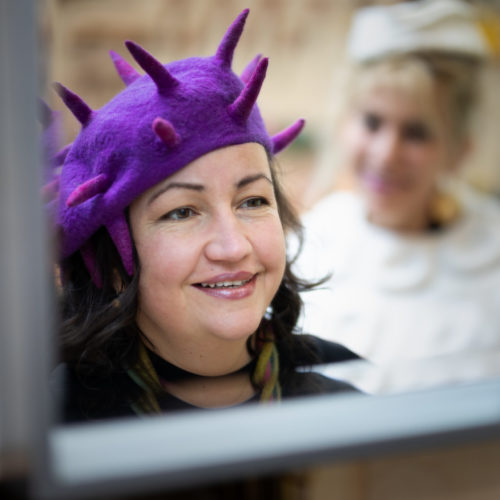
Niki Collier – felt designer and visual artist

Brian Fitzgerald – artist and illustrator

Cathy Dillon – writer and artist
For our Crosscurrents project we jumped into the sea to explore the amazing world of diatoms, with an installation incorporating felt sculpture and audio.
Diatoms are tiny organisms, or microalgae, that are found in abundance in the oceans, waterways and soils of the world. They are both ordinary and extraordinary. Living diatoms are vital for the health of the planet and for us: they generate between 20 and 50 per cent of the oxygen we breathe every year. They make up nearly half of the organic material found in the oceans and serve directly or indirectly as food for many animals. Diatoms are unicellular organisms – they occur either as solitary cells or in colonies which can take the shape of ribbons, fans, zigzags or stars. They are unique in that each one is surrounded by a cell wall made of transparent, opaline silica called a frustule. These ‘glass houses’ are perforated by intricate and delicate patterns, and they cause colouration of the structures – diatoms have been described as ‘jewels of the sea’ and ‘living opals’. They are the most common type of phytoplankton algae, but populations are declining. Scientists attribute this decline to the acidification of the oceans due to climate change. A recent study published in Nature magazine predicted that ocean acidification will drive a global decline of diatoms by between 13% and 26% by the year 2200.
We hope that their message is heard, for the sake of us all.
Listen:
Gallery of Poem Slides
